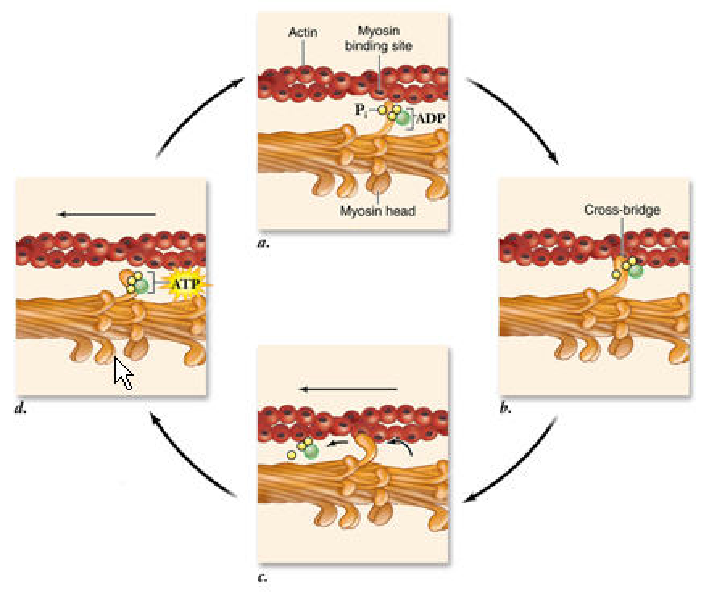The first eukaryotic cells had
a. a nucleus.
b. an endomembrane system.
c. mitochondria.
d. chloroplasts.
e. all of these.
Answer: e
You might also like to view...
Which of the following is true with regard to the carbon cycle? (Select all that apply.)
A. Animals are always sinks for CO2. B. Plants are always sinks for CO2. C. Cellular respiration releases CO2 into the environment. D. Photosynthesis removes CO2 from the environment. E. Plants are permanent sinks for CO2. F. Fossil fuels are stores of CO2. G. The ocean is both a source and a sink of CO2. H. Humans only contribute to the carbon cycle by the burning of fossil fuels.
In the power stroke shown in panel c below, the thin filaments are pulled towards the center of the sarcomere. What is the specific sequence of events that occurs during a power stroke?

A. Release of the phosphate group -> release of ADP -> myosin head changes shape
B. Release of ADP-> release of the phosphate group -> myosin head changes shape
C. Release of ADP -> myosin head changes shape -> release of the phosphate group
D. Release of the phosphate group -> myosin head changes shape -> release of ADP
E. Myosin head changes shape -> release of the phosphate group -> release of ADP
When comparing the gene coding for cytochrome c in several species, it was noted that humans and
chimpanzees share the identical amino acid sequence with a change in only one location. This means that a. humans and chimpanzees can mate and produce viable offspring. b. humans evolved from chimpanzees. c. over time, chimpanzees will eventually evolve into primitive humans. d. humans and chimpanzees are closely related in evolutionary time. e. there is nothing particularly informative about this discovery.
Before a type II hypersensitivity can proceed, three immune components must be in place: complement, IgG, and IgM.
Answer the following statement true (T) or false (F)